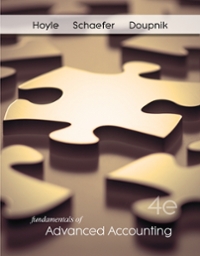Answered step by step
Verified Expert Solution
Question
1 Approved Answer
This is a cost allocation problem for a merchandising firm. Since merchandising firms do not have overhead, you must allocate operating costs instead of overhead
- This is a cost allocation problem for a merchandising firm. Since merchandising firms do not have overhead, you must allocate "operating costs" instead of "overhead costs." Also, the allocations in this problem are to a department, not to a product or job. Nonetheless, the allocation process is the same. Just follow the three steps used in the lectures:Read the problem and question carefully to determine the cost driver.
- Compute the "overhead" rate-budgeted operating costs / budgeted driver.
- Allocate to the specific department-overhead rate X driver for the specific department.
Remember that with activity-based costing (Part B), there is more than one driver and more than one rate, and the allocation to a department is the sum of several individual allocations.
you need to answer partA and partB


Step by Step Solution
There are 3 Steps involved in it
Step: 1

Get Instant Access to Expert-Tailored Solutions
See step-by-step solutions with expert insights and AI powered tools for academic success
Step: 2

Step: 3

Ace Your Homework with AI
Get the answers you need in no time with our AI-driven, step-by-step assistance
Get Started


